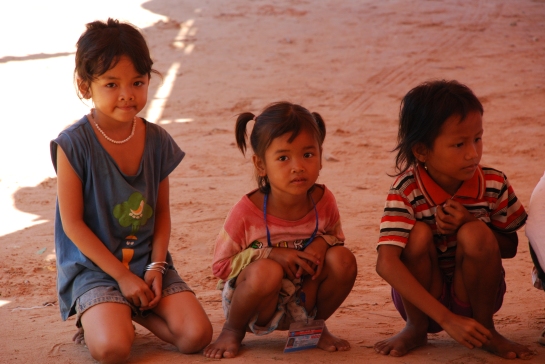
A ‘heavy downpour’ in Bakong.
After months of sustained drought conditions, rain has returned – at least at hopeful levels – for now. In fact Savong said the storm that brought the big downpour was strong enough to rip the roofing off at the SOC in Bakong. Urgent repairs have been carried out this week. Cambodian weather never goes anything by halves – unlike in my homeland of New Zealand where mad outbreaks of drizzle, or wild streaks of cloudiness break the usual sunshine.
Buildings in the countryside of Cambodia face a precarious architectural problem: being well ventilated for the heat versus being fully enclosed and typhoon proof. In the city more and more homes and buildings are enclosed and – power outages aside – enjoy air conditioning via heat pumps.

The fix. New iron, tougher nails.
But in the countryside the architecture is lighter and more susceptible to extreme weather.
I think, long-term, climate change is going to be the dominant concern for rural Cambodia. Economically and architecturally the people are going to be at extreme risk of ruin. Risk has always been a part of rural life – but that marks the difference between advantaged versus disadvantaged nations: the degree of resilience in the face of risks. In this respect Cambodia has a long way to go.
- For more on Who owns the Mekong? The politics of water.
- Or the Cambodian place on the international Risk Ladder.
- Or the merits of thatch versus tin roofing.
By the way, my name is Duncan Stuart, and I’ve been involved with Cambodia since 2004. I’m slowly getting to know the country and have been eagerly watching the ups and downs of its development. My blogs are usually about Cambodia in general, though my perspective is through the lens of supporting Savongs School in rural Siem Reap.






You must be logged in to post a comment.